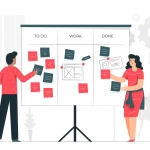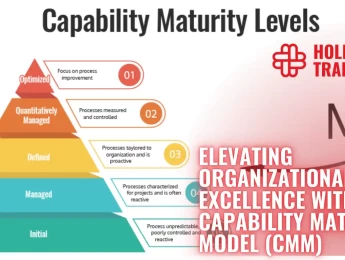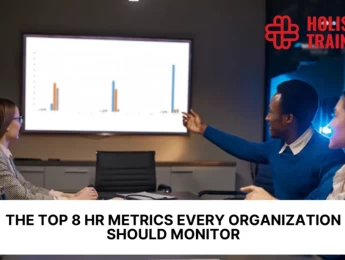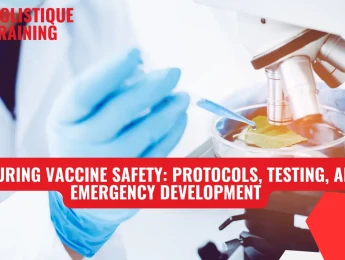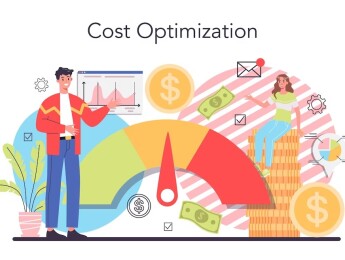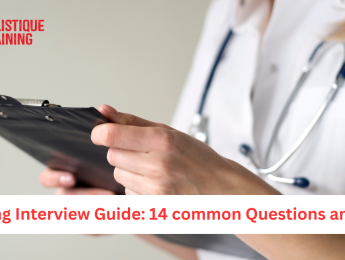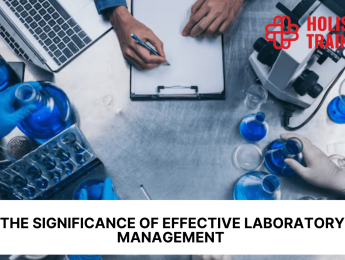Introduction
The Critical Path Method (CPM) is a vital project management technique used to plan, schedule, and control complex projects. By identifying the sequence of crucial tasks that directly impact the project’s completion date, CPM allows project managers to prioritize and allocate resources effectively. Its importance lies in providing a clear roadmap for project execution, ensuring that deadlines are met, and helping teams anticipate and mitigate potential delays. In essence, CPM is a powerful tool for enhancing efficiency and ensuring successful project delivery.
Key Concepts and Terminology
Understanding the key concepts and terminology of the Critical Path Method (CPM) is essential for effective project management. The Critical Path itself is the longest sequence of activities in a project that must be completed on time for the entire project to be finished by its deadline. Any delay in activities on this path directly impacts the project's end date, making it crucial for project managers to monitor and manage these activities closely.
The concepts of Early Start (ES) and Early Finish (EF) represent the earliest times an activity can begin and end, respectively, assuming there are no delays in the preceding tasks. Conversely, Late Start (LS) and Late Finish (LF) indicate the latest times an activity can begin and end without delaying the project's completion date. These timings are essential for understanding the flexibility within the project schedule and ensuring that critical tasks are prioritized.
Float or Slack is the amount of time that a task can be delayed without affecting the overall project timeline. There are two types of float: total float, which applies to the entire project, and free float, which applies to individual tasks. Understanding float is crucial because it allows project managers to identify which tasks can be delayed without jeopardizing the project's timely completion.
Additionally, Dependencies and Constraints are critical in defining the relationships between tasks. Dependencies describe how tasks relate to one another, such as whether one task must be completed before another can begin. There are four types of dependencies:
- Finish-to-Start (FS): Task A must finish before Task B can start.
- Start-to-Start (SS): Task A must start before Task B can start.
- Finish-to-Finish (FF): Task A must finish before Task B can finish.
- Start-to-Finish (SF): Task A must start before Task B can finish.
Constraints are limitations or restrictions that affect the scheduling of activities. These could include resource limitations, fixed deadlines, or external factors like regulatory requirements. Understanding and managing these constraints is vital for keeping the project on track.
By mastering these concepts, project managers can develop more accurate schedules, anticipate potential delays, and make informed decisions that keep the project progressing smoothly.
Using CPM Software Tools
Using CPM (Critical Path Method) software tools has become an essential practice in modern project management, offering a range of functionalities that streamline the process of scheduling, tracking, and managing projects. Overview of Popular CPM Software provides a glimpse into some of the most widely used tools in the industry, such as Microsoft Project, Primavera P6, and Smartsheet. These platforms are designed to help project managers automate complex calculations, create detailed network diagrams, and track progress in real-time. Each software has its unique features, ranging from user-friendly interfaces to advanced analytical capabilities, making them suitable for projects of varying sizes and complexities.
The Advantages of Using Software in CPM are numerous and significant. One of the primary benefits is the ability to automate the process of calculating the critical path, saving time and reducing the potential for human error. CPM software also allows for easy updates and adjustments to the project schedule, enabling project managers to quickly respond to changes or delays. Moreover, these tools often come with powerful reporting and visualization features, such as Gantt charts and dashboards, which help in communicating project status to stakeholders clearly and effectively. Additionally, many CPM software tools integrate with other project management systems, allowing for seamless data sharing and collaboration across teams.
To fully leverage these tools, it's important to follow a Step-by-Step Guide to Using CPM Software. The first step typically involves importing or entering project data, such as activities, durations, and dependencies, into the software. This can often be done manually or by importing data from other sources, like spreadsheets. Next, sequence the activities by defining the relationships between them, which the software will use to construct the network diagram automatically. Once the sequence is established, the software will calculate the early and late start/finish times for each task, identifying the critical path. Users can then utilize the software’s resource allocation and leveling features to assign resources efficiently and manage workload. Finally, monitor the project’s progress by regularly updating the software with actual performance data, allowing the software to recalibrate the critical path and provide updated forecasts.
By using CPM software tools, project managers can significantly enhance their ability to plan, execute, and control projects, ensuring that deadlines are met, and resources are used effectively. The automation, accuracy, and reporting capabilities of these tools make them indispensable in managing complex projects with tight schedules.
Benefits of Implementing CPM in Project Management
Implementing the Critical Path Method (CPM) in project management offers a multitude of benefits that significantly enhance the overall efficiency and effectiveness of managing complex projects. Enhanced Project Planning and Scheduling is one of the most notable advantages. By identifying the critical path—the sequence of tasks that directly impacts the project’s completion date—project managers can develop more accurate and realistic schedules. This allows them to focus on critical activities that need to be prioritized and monitored closely, reducing the likelihood of delays. Additionally, CPM helps in visualizing the entire project timeline, making it easier to identify potential bottlenecks and adjust plans accordingly.
Another key benefit is Improved Resource Allocation. CPM enables project managers to allocate resources—such as labor, equipment, and materials—more efficiently by highlighting which tasks require immediate attention and which can afford to wait. This ensures that critical tasks have the necessary resources to be completed on time, while non-critical tasks can be scheduled around available resources. The result is optimized resource usage, reduced idle time, and minimized costs, leading to more efficient project execution.
Better Risk Management is also a significant advantage of CPM. By mapping out the entire project and identifying the critical path, project managers can foresee potential risks that may impact the schedule. They can then develop contingency plans for critical tasks and proactively manage risks before they become issues. This foresight helps in mitigating delays and minimizing their impact on the overall project timeline, ensuring that the project stays on track even when unexpected challenges arise.
Lastly, CPM contributes to Increased Accountability and Control within the project team. The method’s clear visualization of task sequences, dependencies, and deadlines creates a transparent environment where everyone involved knows their responsibilities and the implications of delays. This transparency fosters accountability, as team members understand the importance of completing their tasks on time. Furthermore, the detailed tracking and reporting capabilities of CPM allow project managers to monitor progress closely, identify issues early, and make informed decisions to keep the project under control.
In summary, the implementation of CPM in project management leads to more accurate planning, efficient resource use, proactive risk management, and enhanced team accountability, all of which contribute to the successful delivery of projects on time and within budget.
Common Challenges and How to Overcome Them
Implementing the Critical Path Method (CPM) in project management comes with its own set of challenges, but understanding these difficulties and how to overcome them can lead to more effective project execution. One of the primary challenges is Dealing with Uncertainty in Activity Duration. Estimating the duration of activities is often difficult due to factors like unexpected delays, changes in scope, or unforeseen obstacles. This uncertainty can make it challenging to accurately define the critical path. To mitigate this, project managers can use techniques such as PERT (Program Evaluation and Review Technique) to estimate durations more accurately by considering optimistic, pessimistic, and most likely scenarios. Additionally, regular updates and continuous monitoring of project progress can help adjust the schedule as new information becomes available, ensuring the critical path remains accurate.
Managing Complex Projects with Multiple Critical Paths is another significant challenge. In large or complex projects, there may be more than one sequence of critical activities, creating multiple critical paths. This situation increases the complexity of managing the project since delays in any of the critical paths can impact the overall project timeline. To address this, project managers should employ robust project management software that can handle multiple critical paths, allowing for real-time adjustments and accurate forecasting. Breaking down the project into smaller, more manageable phases or sections can also help in monitoring and controlling the progress of each critical path separately.
Addressing Resource Constraints is a challenge that often arises in projects, especially when resources are limited or over-allocated. When critical tasks compete for the same resources, it can create delays and push back the entire project schedule. To overcome this, project managers can employ resource leveling and resource smoothing techniques to optimize resource allocation. Resource leveling involves adjusting the start and finish dates of tasks to match resource availability, while resource smoothing aims to achieve a more balanced distribution of resources without altering the critical path. Additionally, having a contingency plan, such as identifying alternative resources or outsourcing certain tasks, can help address resource shortages promptly.
In summary, while the Critical Path Method is a powerful tool for project management, it requires careful handling of uncertainties in activity durations, managing the complexity of projects with multiple critical paths, and efficiently allocating limited resources. By employing advanced estimation techniques, using comprehensive project management software, and applying resource optimization strategies, project managers can overcome these challenges and ensure successful project delivery.
Critical Path Method vs. Other Project Management Techniques
When comparing the Critical Path Method (CPM) to other project management techniques, it’s important to understand the strengths and limitations of each approach to determine which is best suited for a particular project. CPM vs. PERT (Program Evaluation and Review Technique) highlights the differences between these two closely related methodologies. While both CPM and PERT are used for project scheduling and management, CPM is typically used when activity durations are known and can be estimated with a high degree of certainty. It focuses on the deterministic aspect of scheduling by calculating the critical path based on fixed time estimates. On the other hand, PERT is more useful in projects where activity durations are uncertain. PERT uses probabilistic time estimates—optimistic, pessimistic, and most likely durations—to calculate the expected duration of each task and the overall project, providing a range of possible completion dates. This makes PERT more flexible in dealing with uncertainty but potentially less precise than CPM when durations are well-defined.
CPM vs. Gantt Charts compares the use of the critical path method with one of the most widely recognized project management tools. Gantt charts are visual representations of a project’s schedule, showing the start and end dates of each task along a timeline. While Gantt charts are excellent for providing a clear overview of a project’s progress and are easy to understand and communicate to stakeholders, they lack the analytical depth of CPM. Gantt charts do not inherently identify the critical path or account for task dependencies in a detailed manner, making it harder to manage complex projects with interdependent tasks. CPM, with its focus on task dependencies and critical path identification, offers a more structured and analytical approach, making it more suitable for managing large and complex projects where precision and dependency management are crucial.
CPM vs. Agile Methodologies brings out the contrast between traditional project management approaches and modern, iterative techniques. Agile methodologies, such as Scrum or Kanban, are designed to be flexible and adaptive, allowing teams to respond quickly to changes and deliver value incrementally. Agile is particularly effective in projects where requirements are expected to evolve, and continuous feedback is needed. In contrast, CPM is a more rigid, linear approach that works best when the project scope and deliverables are clearly defined from the start. CPM is ideal for projects where strict adherence to deadlines is critical, and where the focus is on completing tasks in a sequential manner. Agile methodologies prioritize collaboration, customer feedback, and adaptability, making them better suited for dynamic projects where change is constant. However, CPM’s structured nature makes it more effective for projects with fixed timelines and clearly defined tasks, where the primary goal is to ensure on-time completion.
In summary, the Critical Path Method excels in situations where task durations are known, and a linear, structured approach is needed. PERT offers more flexibility for uncertain projects, Gantt charts provide a simple visual overview but lack analytical depth, and Agile methodologies prioritize adaptability over strict scheduling. Understanding these differences allows project managers to choose the most appropriate technique for their specific project needs, balancing the requirements for precision, flexibility, and communication.
Table: Comparison of Critical Path Method and Other Project Management Techniques
Comparison | (CPM) | (PERT) | Gantt Charts | Agile Methodologies |
Purpose | Identifies longest path to determine project duration | Estimates task durations with uncertainty using probabilistic methods | Visual representation of project schedule with start and end dates | Flexible and iterative approach for evolving requirements |
Best For | Projects with known and fixed durations | Projects with uncertain durations | Providing a clear overview of progress | Projects with evolving requirements and need for frequent feedback |
Strengths | Precise, structured, good for large, complex projects | Flexible, can handle uncertainty in task durations | Easy to understand and communicate progress | Adaptive, focuses on collaboration and continuous delivery |
Weaknesses | Less flexible, requires well-defined durations | Less precise with well-defined durations | Lacks depth in dependency management and critical path identification | Rigid structure, less suited for projects requiring strict deadlines |
Analytical Depth | High, includes task dependencies and critical path identification | Moderate, probabilistic estimates and range of completion dates | Low, primarily visual and does not show task dependencies | Low, focuses on iterative progress and adaptability |
Best Practices for Effective CPM Implementation
Implementing the Critical Path Method (CPM) effectively requires adherence to several best practices to ensure project success. One of the foundational aspects of CPM is Accurate Time Estimation. Accurate time estimation is crucial because it directly impacts the identification of the critical path and the overall project timeline. To enhance accuracy, project managers should involve experts who have experience with similar tasks to provide realistic duration estimates. Utilizing historical data from past projects can also offer valuable insights. Additionally, breaking down tasks into smaller, more manageable components allows for more precise estimates. To account for uncertainties, consider using a range of estimates, such as optimistic, pessimistic, and most likely scenarios, which can be averaged to create a more reliable time frame.
How to Monitor and Adjust the Critical Path is another critical practice in CPM implementation. Once the critical path has been identified, it’s important to continuously monitor the progress of the tasks along this path. Regular updates on task completion status, time spent, and remaining duration should be collected and analyzed. If any task on the critical path experiences delays, project managers need to take immediate action—either by reallocating resources, compressing the schedule through techniques like fast-tracking or crashing, or adjusting dependencies to mitigate the impact. Using project management software that supports real-time tracking and automated recalculation of the critical path can greatly enhance the efficiency of this monitoring process. By staying vigilant and ready to adjust, project managers can prevent small delays from escalating into major setbacks.
Finally, Continuous Improvement in CPM is essential for long-term project management success. After completing a project, it’s important to conduct a thorough review of the CPM process to identify areas for improvement. This includes analyzing where time estimates were inaccurate, where resource constraints caused issues, and how effectively the critical path was managed. Gathering feedback from the project team can also provide insights into what worked well and what didn’t. Implementing lessons learned into future projects helps in refining time estimation techniques, improving task sequencing, and optimizing resource allocation. Additionally, staying updated with the latest project management tools and methodologies can enhance the effectiveness of CPM in future projects, ensuring that the process evolves with the changing needs of the industry.
In summary, effective CPM implementation relies on accurate time estimation, vigilant monitoring and adjustment of the critical path, and a commitment to continuous improvement. By following these best practices, project managers can enhance their ability to deliver projects on time, within scope, and within budget, ensuring that the benefits of CPM are fully realized.
Conclusion
In conclusion, the Critical Path Method (CPM) stands out as a crucial technique in project management, offering a structured approach to planning, scheduling, and controlling project activities. By accurately identifying the critical path, project managers can prioritize tasks, optimize resource allocation, and proactively manage risks, ensuring projects are delivered on time and within scope. The key points discussed highlight the importance of accurate time estimation, continuous monitoring, and the use of CPM software to enhance project outcomes. As a proven method, CPM plays an indispensable role in driving project success, making it an essential tool for any project manager aiming for efficiency and precision in their work.





